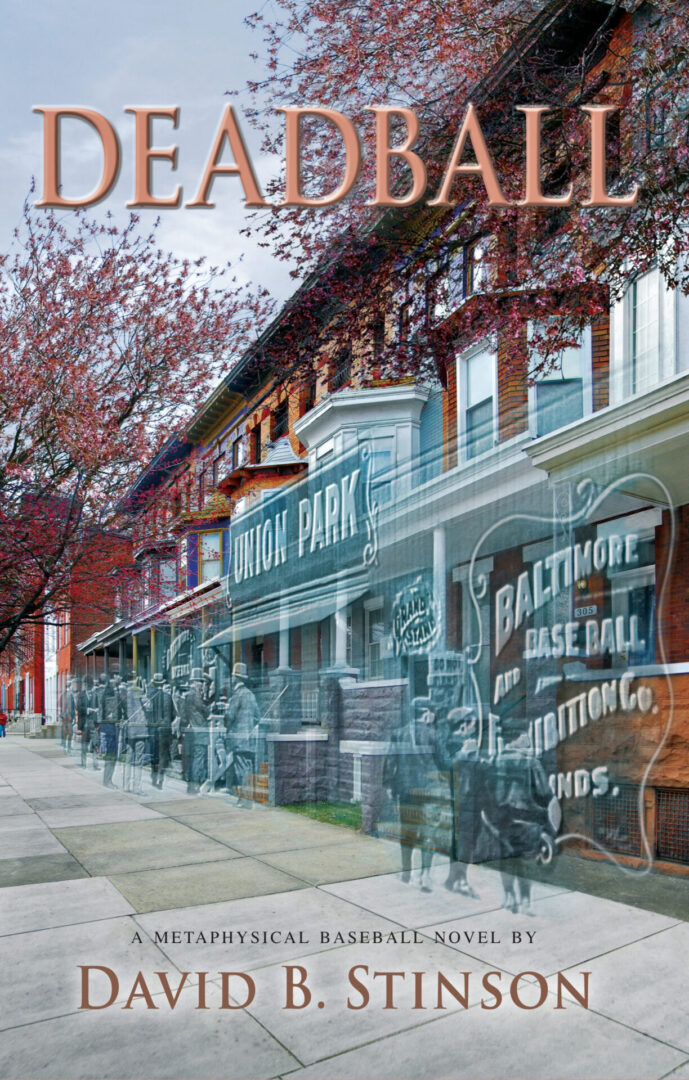Cooper Stadium (“the Coop”) was a minor league baseball ballpark located at 1155 West Mound Street, in Columbus, Ohio.
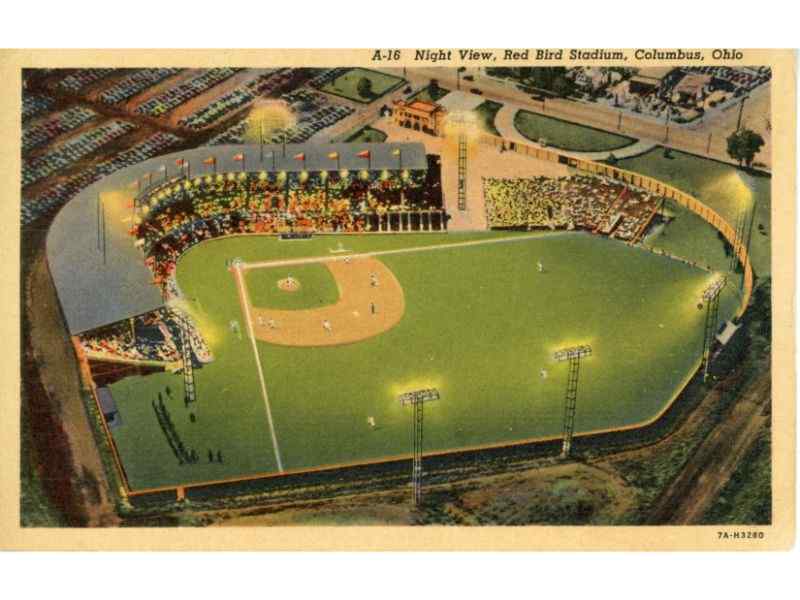
Christened Red Bird Stadium when it was opened on June 3, 1932, the ballpark originally was home to the American Association Columbus Red Birds. The Red Birds were the top minor league affiliate of Branch Rickey’s St. Louis Cardinals.
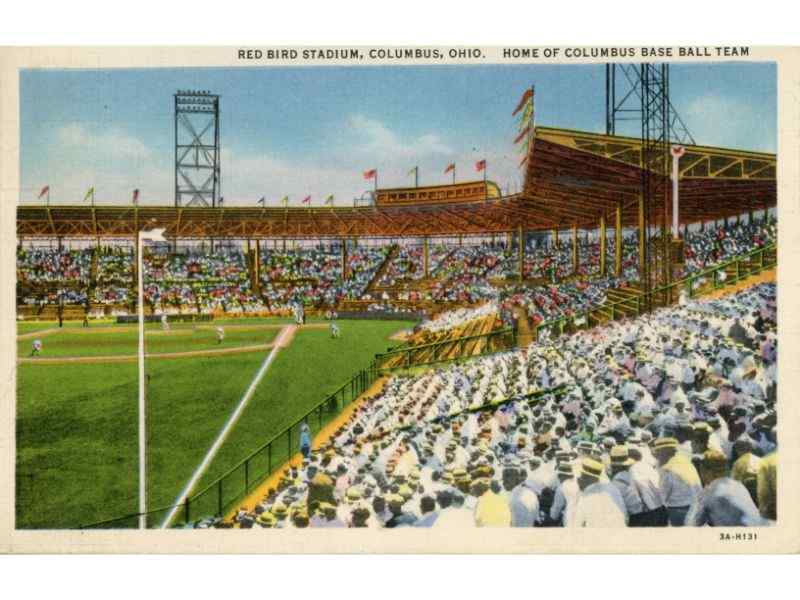
Notable St. Louis Cardinal farm hands who played at Red Bird Stadium include Paul “Daffy” Dean, Joe Garagiola, Harvey Haddix, Max Lanier, Enos Slaughter, Harry Walker, and Sammy Baugh (Football Hall of Fame quarterback for the Washington Redskins).
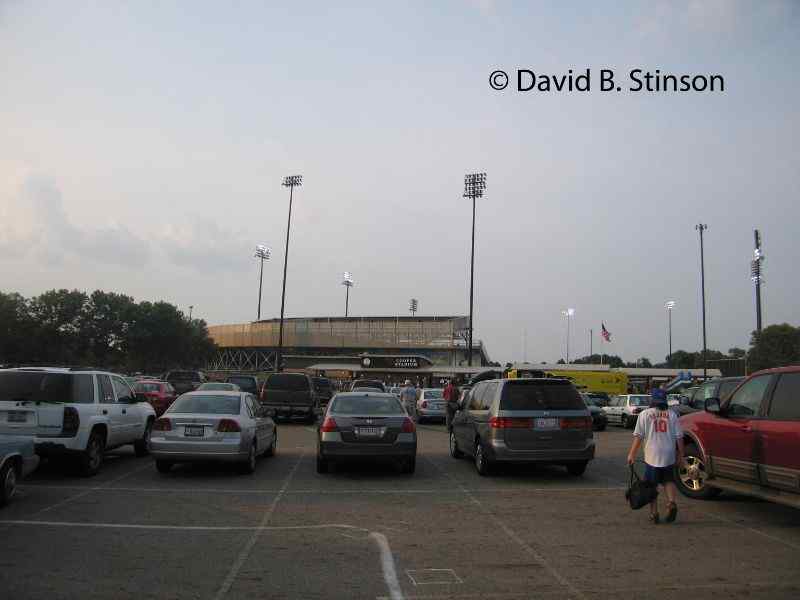
When the Red Birds departed Columbus after the 1954 season, local businessman and former Red Bird clubhouse boy Harold Cooper brought an International League franchise to Columbus in 1955.
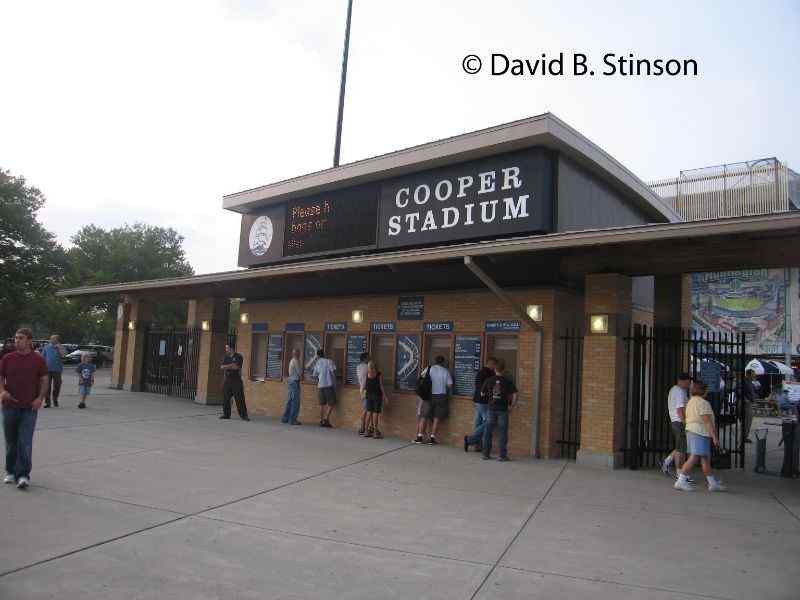
The new team was named the Columbus Jets and the ballpark was renamed Jets Stadium in honor of its new tenant. For the first two seasons, the Jets were an affiliate of the Kansas City Athletics. From 1957 to 1970 they were an affiliate of the Pittsburgh Pirates.
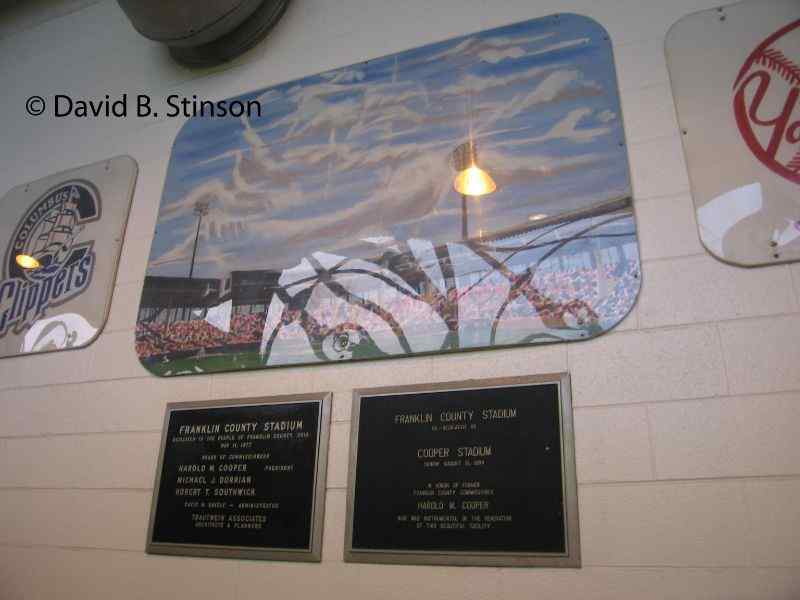
The name “Jets” was a nod to the city’s notable connections with aviation history, including the Wright Brothers and Wright-Patterson Air Force Base.
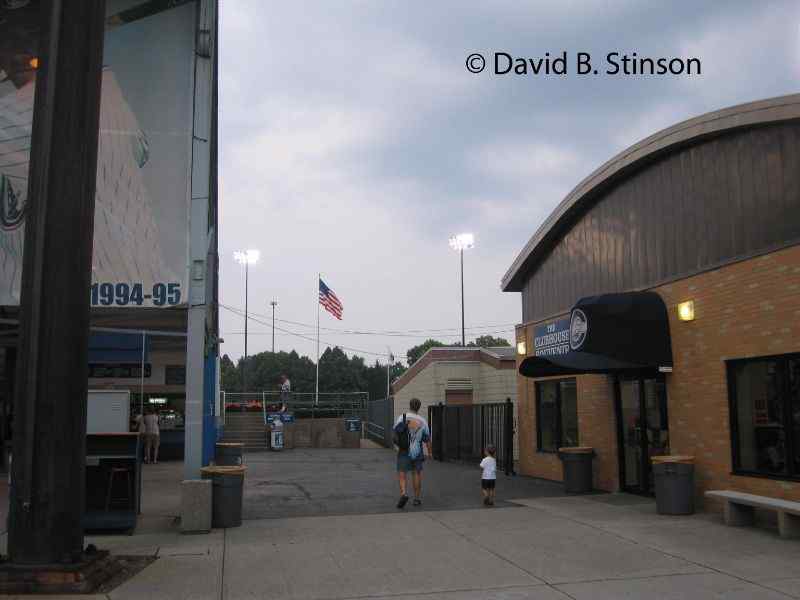
Professional baseball was not played in Columbus from 1971 to 1976. In 1977, Mr. Cooper, then a Franklin County Commissioner, brought baseball back to Columbus and a newly-renovated Franklin County Stadium, which opened as the home of the Columbus Clippers.
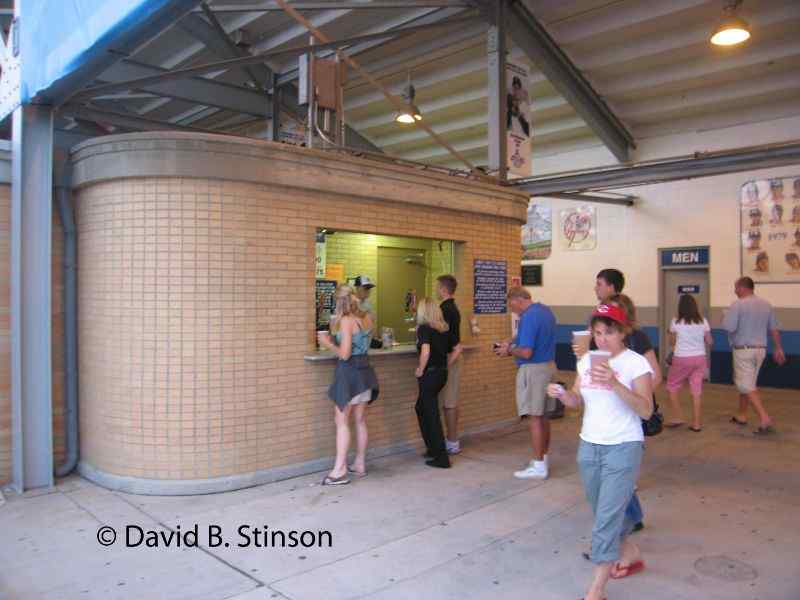
The Clippers were an affiliate of the Pittsburgh Pirates for the first two seasons at Franklin County Stadium and, from 1979 to 2006, were the AAA affiliate of the New York Yankees. In 2007 and 2008, the Clippers were an affiliate of the Washington Nationals.
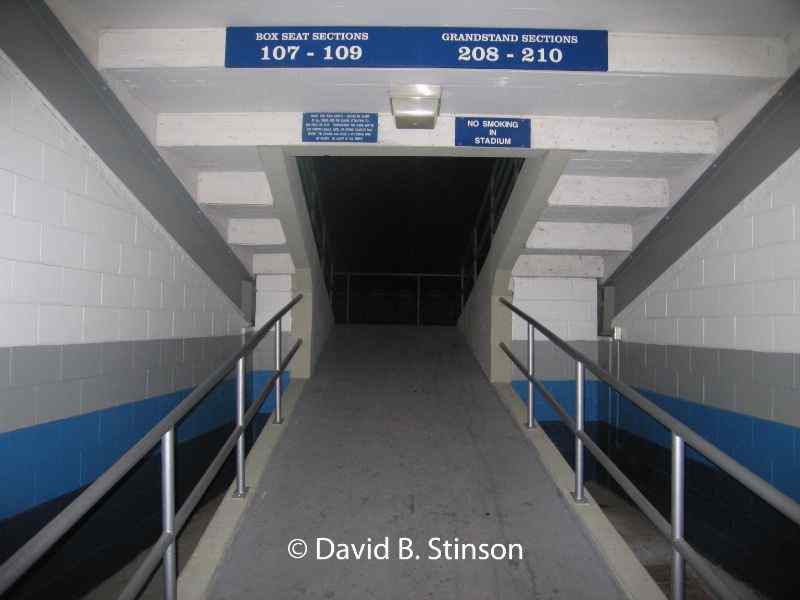
Renovations to the stadium included the addition of sky boxes and a new press box above the grandstand roof.
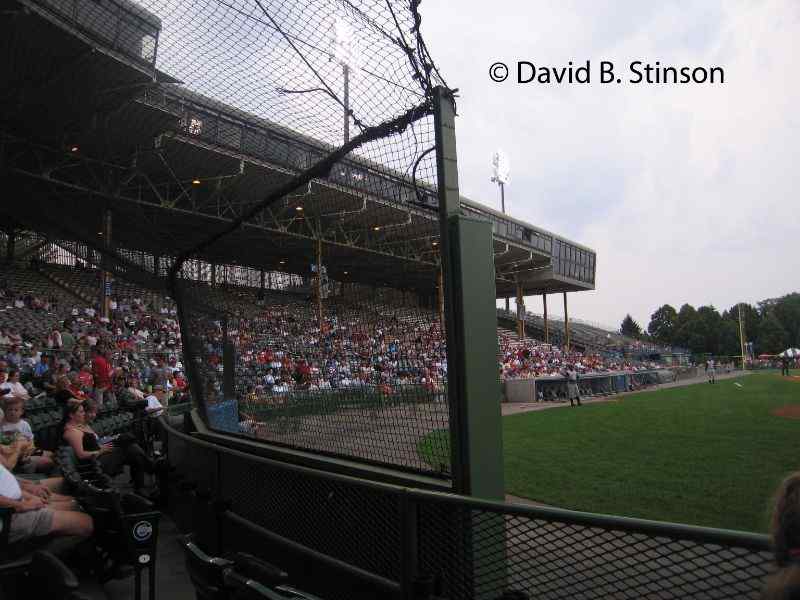
The 1930s metal bracing for original grandstand roof was left intact and incorporated into the renovations.
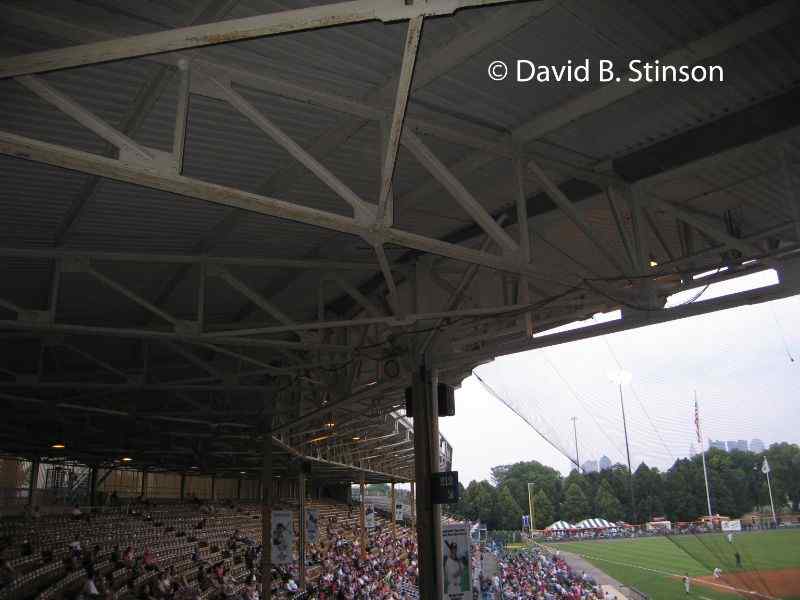
The concourse behind the first and third base sides remained largely in tact as well.
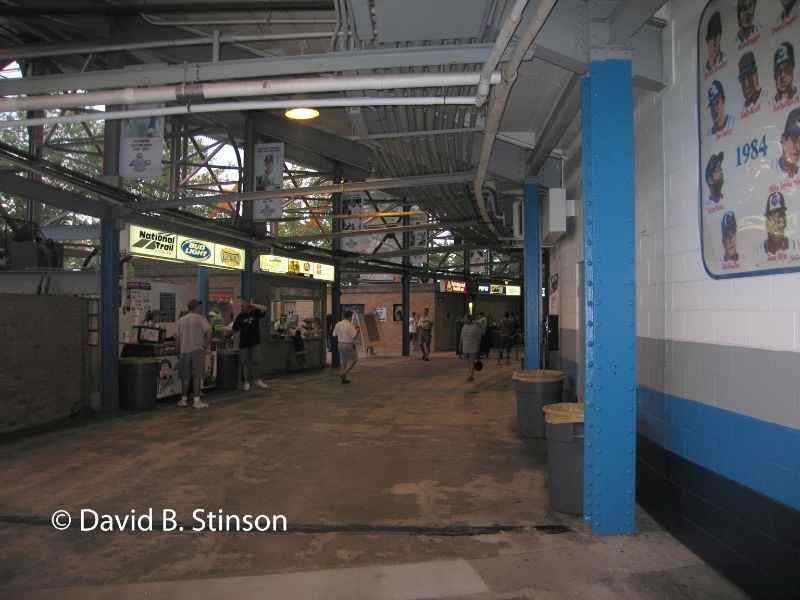
The original wooden grandstand seats were replace with yellow-painted steel and aluminum seats.
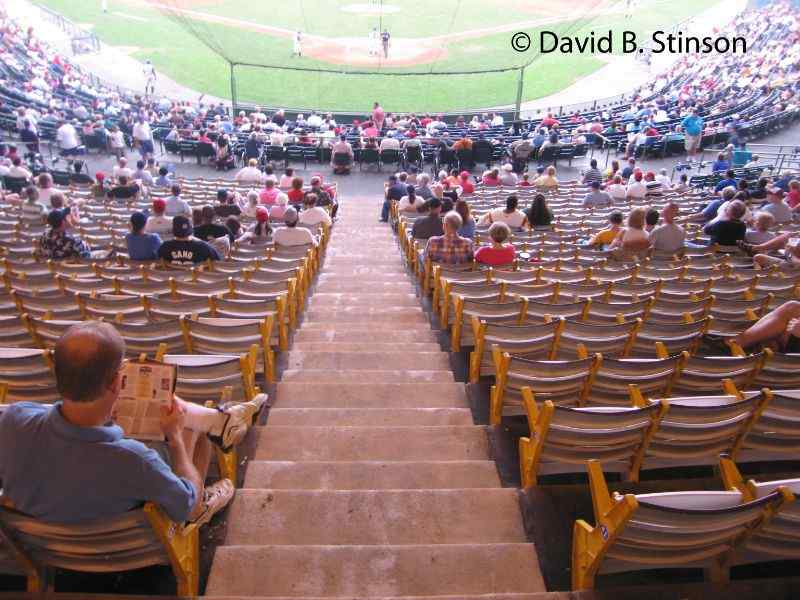
In 1984, the ballpark was renamed Cooper Stadium, in honor of Mr. Cooper, who also served as President of the International League from 1978 to 1990.
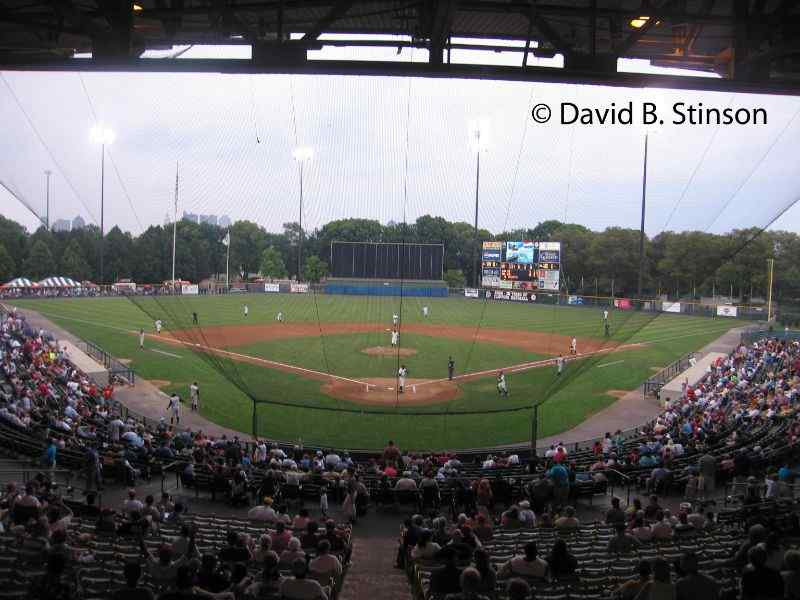
The dugouts at Cooper Stadium were true dugouts, placing the players on the dugout bench at eye level with the playing surface.
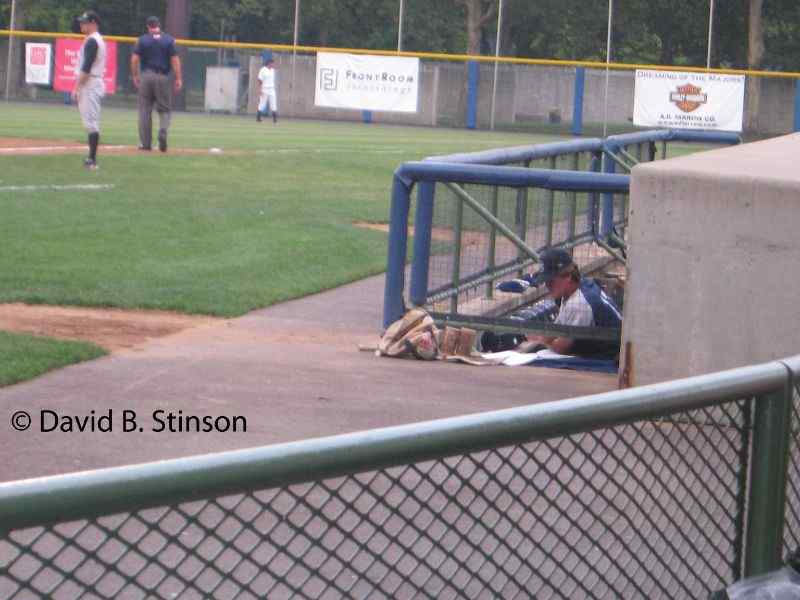
Fans sitting in the box seats along the first and third base sides of the stadium were likewise close to the action.
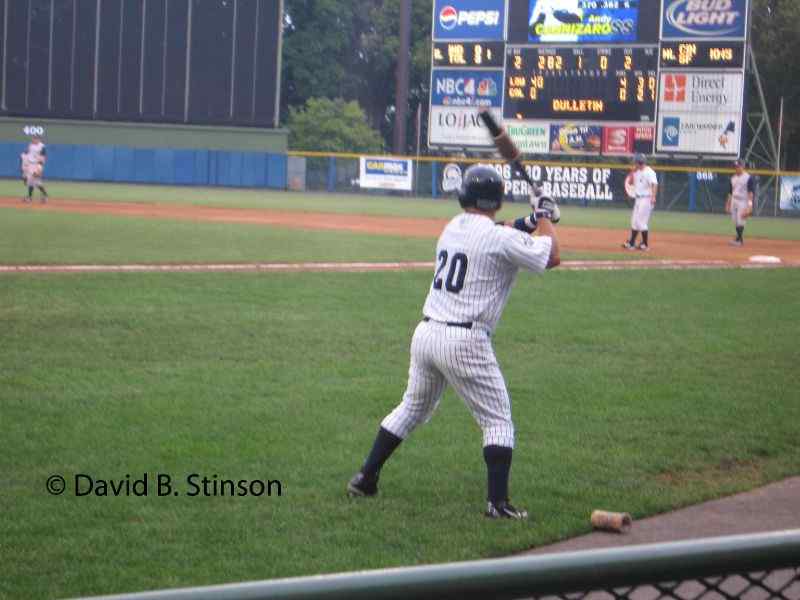
Cooper Stadium was located along I-70 and I-71, sandwiched between a residential neighborhood to the north, and Greenlawn Cemetery to the south.

Once inside the stadium, however, the view was almost bucolic, with trees surrounding the outfield fence
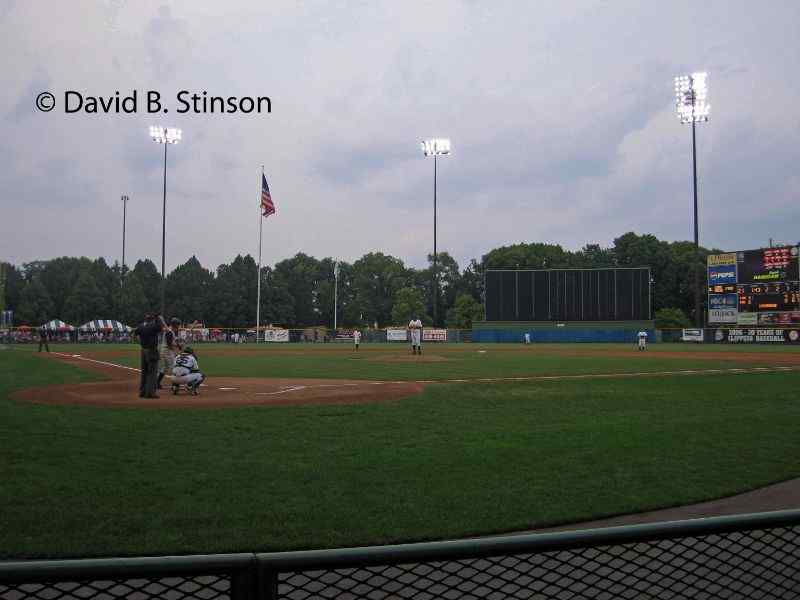
The final game at Cooper Stadium was played on September 1, 2008.
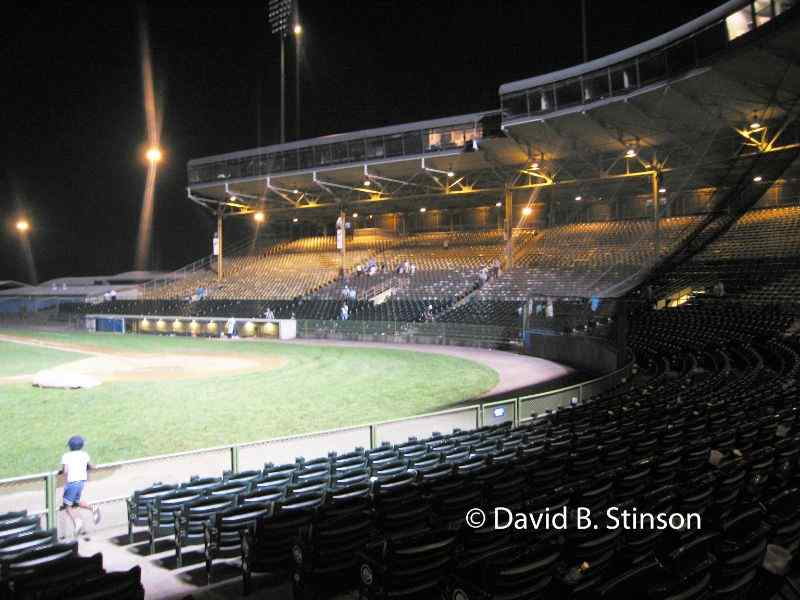
The Columbus Clippers moved to a new ballpark located three miles northeast, closer to downtown Columbus.
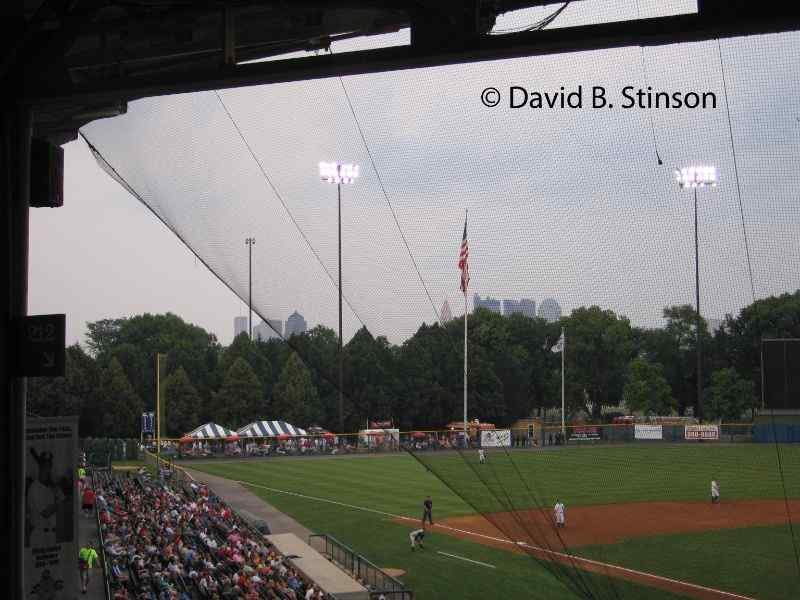
The new ballpark, Huntington Park, opened on April 18, 2009.
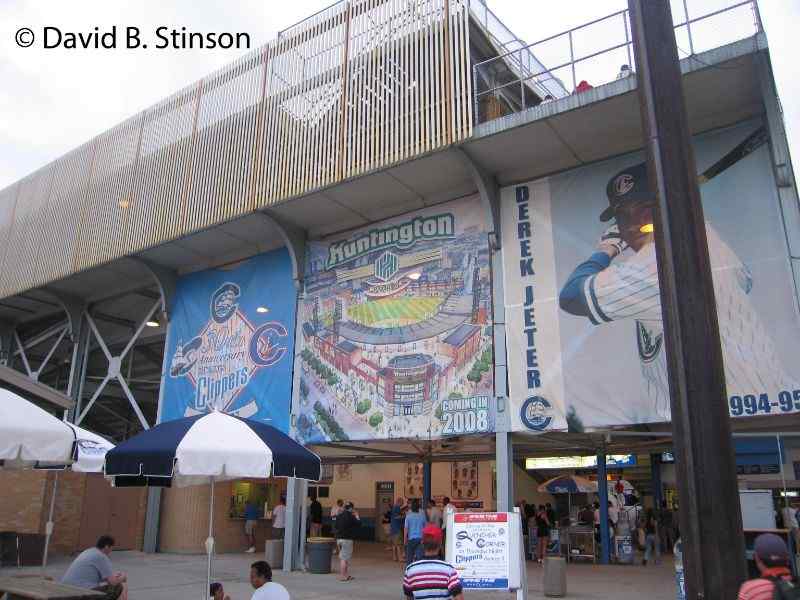
After the Clippers departed, Cooper Stadium sat vacant for several years while a local development company negotiated with the city of Columbus to purchase the ballpark site. Arshot Investment Corporation currently is in the process of converting the Cooper Stadium site into a multi-use Sports Pavilion and Automotive Research Complex (SPARC). In April 2014, demolition of Cooper Stadium began, with the removal of the first base grandstand.
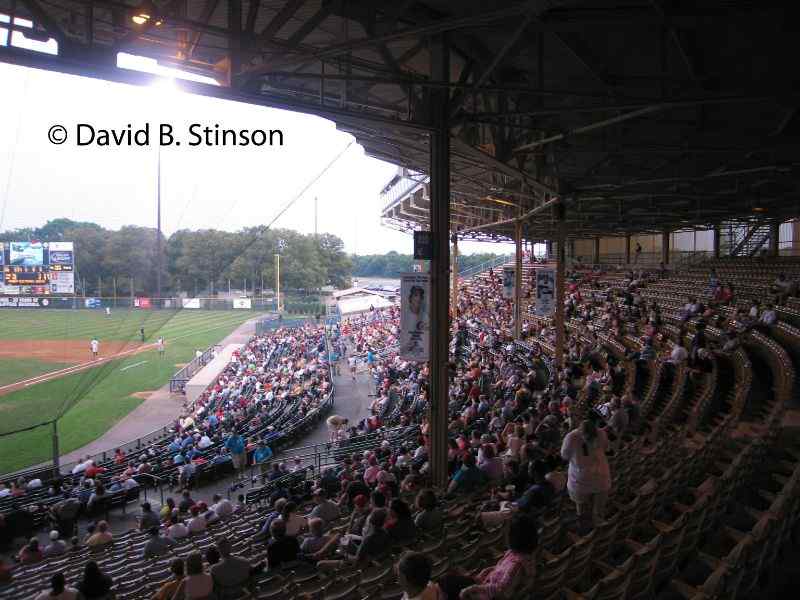
However, the third base grandstand of Cooper Stadium is being preserved and incorporated into a portion of the paved half-mile race track. Thus, Cooper Stadium will follow in the footsteps of Westport Stadium in Baltimore, the former home of the Baltimore Elite Giants, which in the 1950s was converted into Baltimore’s first NASCAR-sanctioned racetrack.
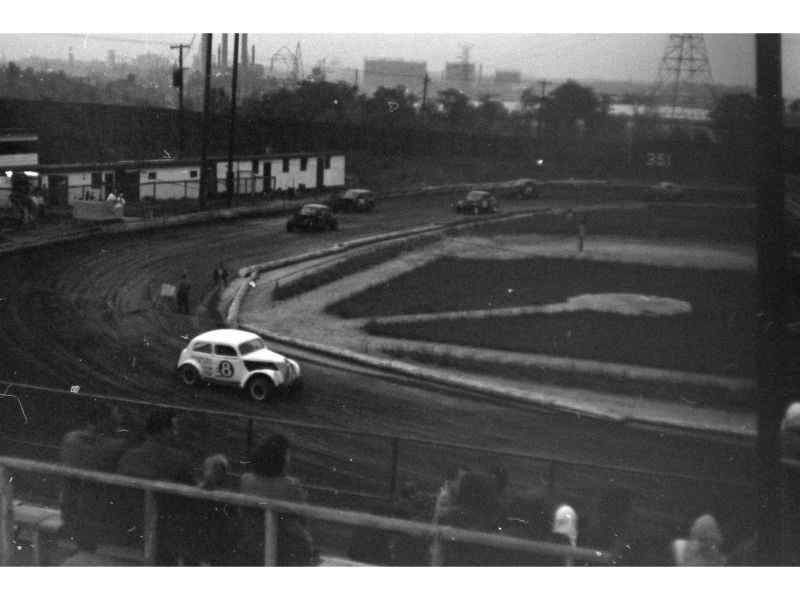
SPARC will also include a technology center, lodging, conference and exhibition space, and restaurants.
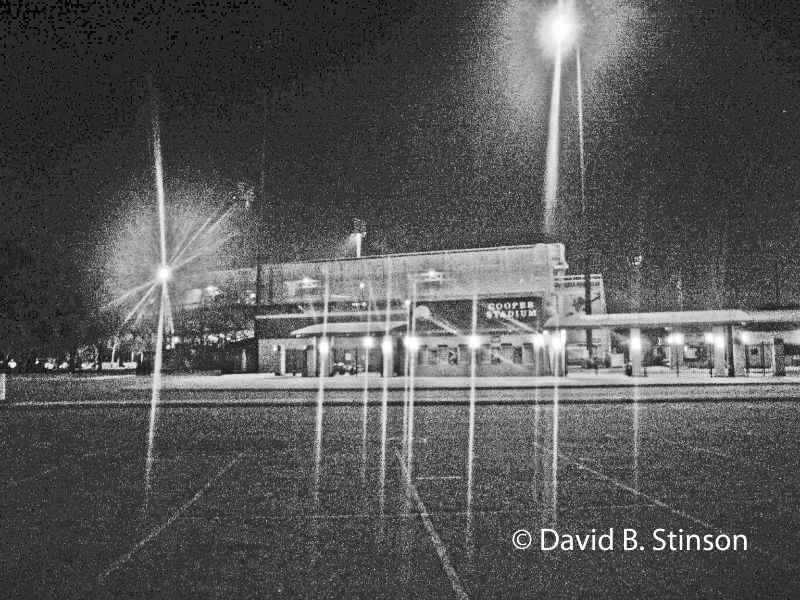
Although Cooper Stadium is now a lost ballpark, like Braves Field in Boston a portion of it remains, repurposed, allowing future generations the opportunity to experience at least a portion of what made Cooper Stadium a great place to watch a ballgame. Thanks to Arshot for having the vision to keep a part of Cooper Stadium, and baseball history, alive in Columbus, Ohio.
